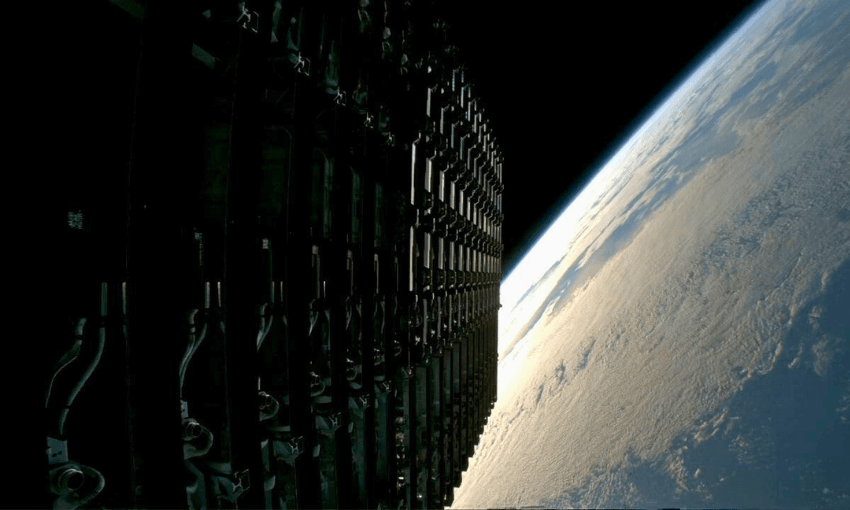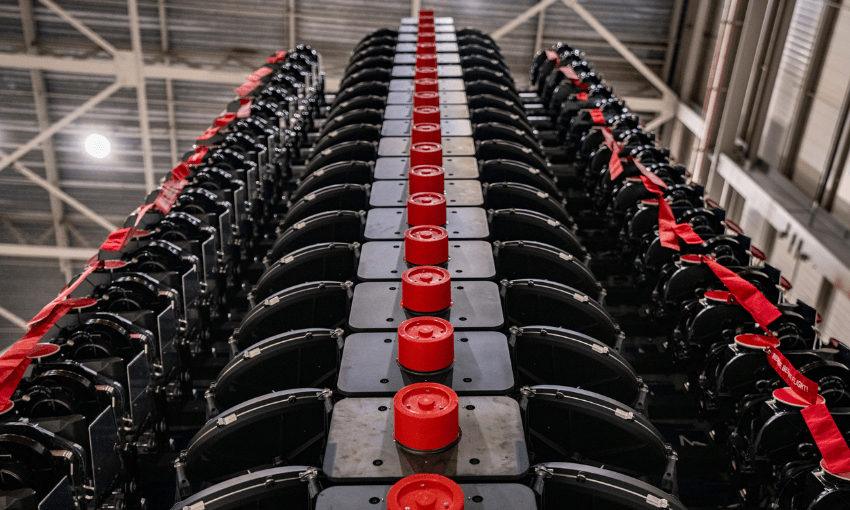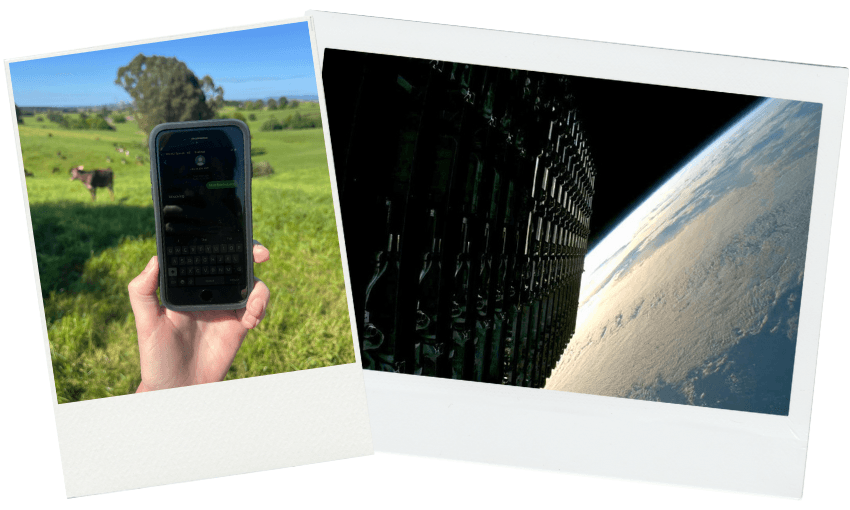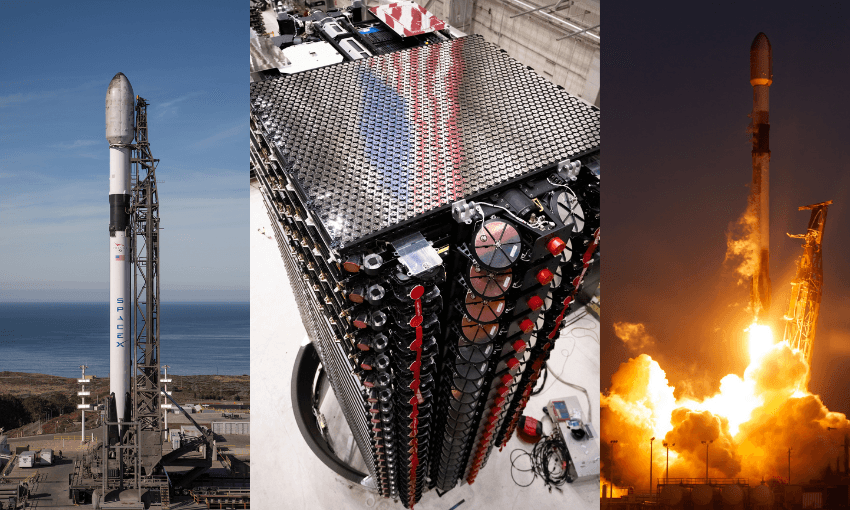Satellite texting, explained.
Late last year, One NZ became the first company globally to launch a nationwide Satellite TXT service powered by Starlink. While anyone can hypothetically use this new tech, its potential is perhaps largest for the 40% of the New Zealand landmass that does not have mobile coverage. New Zealand’s rugged terrain and large swathes of sparsely populated land make it difficult to run physical infrastructure to many parts of the country.
One NZ is using Starlink satellites equipped with Direct to Cell technology to open up a whole world of possibilities for cellular coverage here. This technology already has a powerful track record. During Cyclone Gabrielle, Starlink satellites were able to provide crucial connectivity in emergency scenarios.
As One NZ rolls out Direct to Cell technology to customers, people who live, work and travel in remote areas could stand to benefit. So what’s the latest on this new service? And how does it even work?
I’m hearing a lot about satellite texting lately. What’s that all about?
Satellite texting is the latest development in how we connect to each other in Aotearoa. Unlike traditional mobile texting which uses cell towers situated on the ground, satellite texting uses “cell towers in the sky” to provide mobile coverage across Aotearoa, including to the around 40% of NZ’s landmass that is not covered by traditional mobile networks – plus approximately 20 kilometres out to sea.
So we’ve literally glued cell towers to satellites?
Well not literally, no. It’s a little bit more than just a cut-and-paste job, and they definitely look a lot different from the regular cell towers you’re thinking of. But for the purposes of visualising how this all works, it’s useful to think of these satellites as cell towers floating in the sky.
Got it. But why? What’s wrong with good old cell towers on the ground?
Nothing at all! Cell towers on the ground are the backbone of connectivity in Aotearoa, providing 60% geographical coverage. The biggest advantage of satellite cell towers, however, is their ability to address “dead zones” – areas that don’t get cell coverage, either because they’re too far from the nearest cell tower or because something in the environment, maybe a huge mountain, is obstructing transmission. Currently, around 40% of New Zealand’s geography remains untouched by traditional mobile coverage with countries like Australia (60%) and Canada (70%) also in similar situations.
Why is it so hard to get cell coverage across the whole country?
Unfortunately, building cell towers across the entire country is a pretty physically prohibitive task. Much of Aotearoa is characterised by rugged and mountainous terrain which makes building functional infrastructure difficult or impossible.
Plus, cell towers are expensive to build and maintain. Most of us already live in cities and towns with good mobile coverage, so there’s little incentive for networks to spend money expanding further across our sparsely populated land.
If most of us are already living in areas with decent cell coverage, what’s the point of addressing these ‘dead zones’? It’s nice going off the grid sometimes.
If you’re looking to escape from dreaded work calls or Instagram’s algorithmic vortex, then going off the grid can be a lovely change of pace. But when your car breaks down in the middle of nowhere or you get lost during a hike, being off the grid can be stressful, dangerous, and sometimes even a matter of life or death.
Satellite communication is set to be a game changer for outdoor safety. For example, if a group of skiers are running behind schedule, they can simply send their loved ones a quick text to let them know they’re on their way, preventing an unnecessary call out for search and rescue. Fishers, divers, boaties, anyone out on the water are included as well, with offshore coverage extending up to 12 nautical miles.
So do trampers no longer need to carry emergency communication devices?
Satellite texting doesn’t replace emergency devices like personal locator beacons (PLBs) or satellite phones. It does, however, give outdoor enthusiasts an accessible and affordable layer of protection to rely on if things go wrong.
Hmm, I’m not really an outdoor person though. Are there any other benefits to this tech?
Absolutely. It will add a layer of resilience to the communication network we all use. If the ground based cell network was hit by a cyclone and lost power, let’s say, customers could continue to text via satellite.
It also benefits drivers who, in the event of a breakdown or accident on remote roads, will have a reliable way to text for help wherever they may be. For businesses that rely on transporting goods and services nationwide, like logistics or waste management companies whose drivers often spend long hours on the road, having the ability to get in touch with customers and their headquarters also means an extra layer of convenience, safety and peace of mind. Farmers and other rural workers are set to reap the benefits too.
Is there anywhere this won’t work?
As long as you have a direct line of sight to the sky, satellite texting should work wherever you are in Aotearoa. Unfortunately, that means cavers are probably out of luck.
OK texting is cool, but what about calls and data?
There’s no set date for this roll out, but the plan is to offer calls and data eventually. The technology is still new but should improve as time goes on.
So how does this technology work exactly?
Basically, SpaceX has launched hundreds of Starlink satellites with Direct to Cell capability into space. These satellites circle the globe at a low-earth orbit, providing coverage over a much larger geography from above. They move in convoys so that when one satellite moves out of range, another one soon follows. That means there may be some delays as satellites move in and out of sight, but their continuous orbit means that shouldn’t be more than a few minutes at a time.
So how long can we expect texts to take?
Currently, most texts should be delivered within a minute, although in some cases it may take longer. However, as more and more satellites are deployed, delay times are expected to steadily decrease.
What about weather? Will rain, snow or wind affect this service?
Other than extreme weather events, satellite texting is expected to work in whatever climate you’re in as long as you have a clear line of sight to the sky.
I’m keen. What do I need to do?
If you’re a One NZ customer with an eligible phone and plan, you don’t have to do a thing. Satellite texting is included in business and consumer pay monthly plans, as well as on Prepay for a limited time, at no extra cost. Your phone will automatically start delivering texts via satellite if it detects you’re outside of traditional mobile coverage and you have a line of sight to the sky. You’ll know you’re connected to the satellite network when the banner on the top left of your phone screen says ’One NZ SpaceX’.






